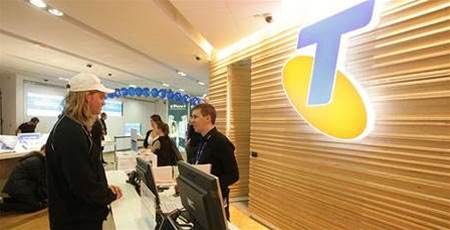Telstra has used open source machine learning technology to answer the age-old question that plagues every marketer: how effective is my ad spend?

The telco wields one of the biggest marketing budgets in Australia, but that doesn't stop Telstra from wanting to track the performance of every dollar spent.
The company previously faced a six-month lag to get visibility into the effectiveness of its marketing spend; that is now down to five weeks using new marketing mix modelling developed in partnership with Accenture, Deakin University and Servian.
The telco previously used a traditional econometric model to assess the performance of its marketing spend, pulling together 800 variables – which took two-and-a-half months to assemble – and then modelling this using regression techniques.
"Six months after the marketing period had ended I could tell the CMO [chief marketing officer] and the marketers how effective their marketing was... six months ago," Telstra's director of research, insights & analytics Liz Moore told the recent Big Data & Analytics Innovation Summit in Sydney.
This was enough to give Telstra's board some visibility into return on marketing investment but "it was slow, it was cumbersome and we could not actually use it to make in-flight decisions", Moore added.
Telstra's CMO Joe Pollard laid down the the challenge – she wanted to know in "close to near real-time how effective every dollar spent on marketing is".
That's easy enough on digital channels, but Telstra's advertising spans TV, radio, cinema, catalogues, letterbox, newspaper and in-store.
The company needed to work out how to allocate its "substantial" marketing budget to target consumers, small businesses, enterprise and government customers, across prepaid and postpaid products, for fixed broadband and NBN, and also on a geographic level.
"There was a need for speed, which we did not have with the econometric approach, and there was a need for significant granularity," Moore said.
Machine learning
Working with Accenture, Deakin University and analytics specialists at Servian, Telstra "exploded the amount of data we pulled in together," Moore said.
Accenture guided Telstra on its move to a Bayesian belief network using machine learning.
These machine learning models "identify the direct and indirect relationships between marketing, non-marketing and business performance variables", according to Accenture.
"We built over 900 machine learning models that come together to allow this," said Moore.
Telstra now runs an instance of the Accenture Insights Platform, hosted in AWS Sydney and integrated into Telstra’s environment.
The system combines secure data transfer from Telstra, PostgreSQL data storage, R for modelling and Accenture’s AIP Design Studio for visualisation and optimisation.
While Telstra utilises SAS as its core analytics technology and still uses SAS "extensively", the telco built this new capability in R "due to the open source foundations and ability to do extensive machine learning experimentation and algorithm customisation that was critical to this innovation", according to Accenture.
Telstra went from having "hundreds of variables to thousands of variables". These include factors such as sales data, footfall in store, site visits, customer churn, sentiment analysis from social media and Net Promoter Score data.
The use of automation allows Telstra to scale its marketing mix modelling at speed in a "constrained budgetary environment", Moore said.
Telstra and Accenture also ran a series of design thinking sprints to build an interactive app that offers data visualisation of marketing effectiveness, which is being constantly updated as more people use it.
The Bayesian approach makes it easy to introduce new variables, such as additional products or new marketing channels, Moore added.
"We have the new iPhone launching, there will be new plans for that and they have to be incorporated," she said by way of example.


_(22).jpg&h=140&w=231&c=1&s=0)
_(20).jpg&h=140&w=231&c=1&s=0)





_(26).jpg&w=100&c=1&s=0)

 iTnews Executive Retreat - Security Leaders Edition
iTnews Executive Retreat - Security Leaders Edition












_(1).jpg&h=140&w=231&c=1&s=0)



